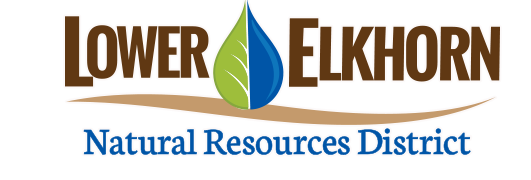Increased nitrate levels in the groundwater could put your family's health at risk
/Is your drinking water putting your health at risk? The maximum contaminant level of nitrate-nitrogen for drinking water is 10 parts per million (ppm), anything over that amount is not safe to drink.
Nitrate contamination can be particularly harmful to infants and children. Consuming drinking water containing high nitrate levels can limit the ability of red blood cells to absorb oxygen. This condition, defined in the health industry as methemoglobinemia or ‘blue-baby syndrome’, is one of the most acute health implications.
“I was the parent of a severely handicapped child. Blue-baby syndrome can occur during pregnancy or during the first 6 months of a baby’s life. It can cause developmental problems that could be with that child forever. The lifetime of challenges that come with raising a child with disabilities can be overwhelming,” said, Dave Kathol of Norfolk. “Imagine how quickly your life could change. Would you be prepared to handle it, financially and emotionally?”
Birth defects in Nebraska are on the rise, and within the Lower Elkhorn Natural Resources District (LENRD) evidence indicates that these health implications are increasing at a faster rate than the rest of the state. According to a research study that Dr. Jesse Bell, University of Nebraska Medical Center professor of health and environment discussed, birth defects, on a national scale, occur in 3.3 percent of all live births, and Nebraska exceeds the national average with 5.8 percent. “In Dodge and Pierce Counties, in northeast Nebraska, however, the rate of birth defects is reaching as high as 14 percent. The counties with higher birth defects also have a greater prevalence of agrichemicals in the water,” said Bell.
Health researchers are also gaining additional insight on the potential link between nitrate contamination in drinking water and Nebraska’s high rate of pediatric cancer. According to the Centers for Disease Control & Prevention, Nebraska has one of the highest rates of pediatric cancer in the United States. A study out of the University of Nebraska Medical Center has found that 63 percent of Nebraska counties exceed the national average for pediatric brain tumors. Bell continued, “Our research shows that Nebraska counties with groundwater nitrate concentrations between 2.1 and 5 mg/L have higher incidence of pediatric brain cancer, pediatric leukemia, and pediatric lymphoma.”
High concentration of nitrates in drinking water have also been linked to additional adverse health risks, such as: colorectal cancer, thyroid cancer, stomach and kidney cancer, ovarian cancer, Alzheimer’s, Diabetes, and Parkinson’s Disease.
“Water quality is a top priority for this district,” said LENRD General Manager Mike Sousek. “High nitrate in your drinking water poses health risks for you and your family. While the body of science is still limited on some of these risks, the long-term implications deserve our attention.”
Nitrate is found naturally in the environment; however, evidence shows that excess nitrate comes primarily from the use of commercial fertilizers (both organic and manufactured). Nitrate dissolves readily in water and can easily transport beyond the root zone if unused by a growing crop to contaminate groundwater.
The LENRD is responsible for the development, management, utilization, and conservation of groundwater and surface water. As part of the Groundwater Quality Sampling Program, technicians collect annual water samples to document changes or trends in groundwater quality. In recent years, this annual monitoring has provided evidence of elevated levels of groundwater nitrate in portions of Cuming, Colfax, and Dodge Counties. In October 2020, the LENRD Board of Directors voted to begin the formal process of considering a Phase 2 Groundwater Management Area in portions of these three counties.
“While imposing regulations is not something we enjoy doing, it is necessary that we work together to implement best management practices to reduce groundwater contaminates and protect our drinking water,” said LENRD Assistant Manager Brian Bruckner. “We invite all stakeholders to join us at the Open House Public Hearing as we look at the results of the groundwater monitoring and address potential health risks and the critical need to protect our water supply.”
Bell added, “We want to further educate the public about the relationship between birth defects and the exposure to agrichemicals as we enhance monitoring efforts and continue our research. We see agriculture as part of the solution and want to develop partnerships between the ag community and public health community to help address these issues for a safer Nebraska.”
The Lower Elkhorn NRD seeks the public’s feedback during an Open House Public Hearing on Thursday, March 25th at the Nielsen Center in West Point from 5:00-7:00 p.m. The hearing was postponed from the original date due to COVID restrictions. During the open house, additional insight on the monitoring and assessment segment of this process will be provided along with an explanation of the proposed management area boundaries and controls for a Phase 2 Groundwater Management Area. For more information, contact LENRD at 402.371.7313.
Open House Public Hearing
Thursday, March 25 | 5-7 p.m.
Nielsen Center in West Point, Nebraska












